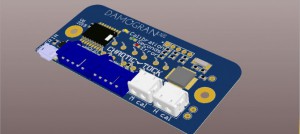
Calibration of a sensor means finding out a few parameters that are needed to convert raw readouts to actual results. A single sensor needs a few numbers. It is attached to a high-precision-high-complexity-high-price device in a calibration laboratory and a number of measurements is made to obtain the parameters. It takes time, money, knowledge and patience and we have none of those.
Our calibration process is just like the calibration described above, except everything is turned upside down.
- It can’t be done on a single sensor. We are making stuff with multiple sensors anyway, much like everybody else is today.
- It doesn’t need a calibration device. You just need one known weight (something like yourself with a personal scale).
- It can be done anywhere (even in a calibration laboratory, but works just fine even at your home).
- It takes around a minute. Give or take a few seconds.
- It costs no money. You already own the gear: the sensors you would like to calibrate and yourself (in case you’re married, ask your wife/husband for permission to use yourself).
We mention kung-fu because we’re using some heavy-duty Python numerical math. It’s so badass there’s not a chance we could understand everything. Everything made with it looks more like a Python-fairy magic.
However, very soon, we will have to port the much too polite python to brutal C to be used in microcontrollers. We’ll have to understand every last bit of the stuff. The abracadabra will have to disappear – but we’ll have a black belt in Cung-fu!




